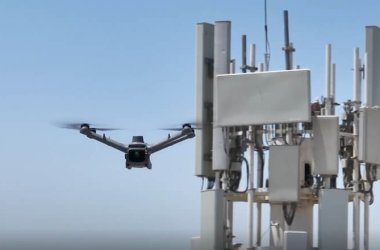At the 8th Global Mobile Broadband Forum, Huawei Wireless X Labs has announced the “Digital Sky Initiative” that aims to spur the development of drone applications and enable the low airspace digitised economy via enhanced low airspace network coverage.
Also during the event, Ken Hu, the Deputy Chairman and Rotating CEO at Huawei, outlined a world where all things are connected, presenting telecom operators with nearly limitless growth potential.

Today, there are 20 million shipping containers in the world, and 300 million LED streetlamps. There will be 1.8 billion water meters by 2025, and every year, 100 million new bicycles roll off the factory floor. “Each of these is a potential new subscriber,” said Hu. “But to support a future where all things are connected, telecom operators need to strengthen network performance and management. Future networks need to be application-centric, data-driven –and eventually, intelligent.”
“We have to believe that everything can be connected and will be connected,” he continued. “These opportunities are real. But to seize them, we need a new model.”
Hu calls this new model the “scale-out and scale-up approach.” First, he recommends that telcos scale out to provide more connections. This will generate revenue, and pave the way for scaling up. Next, they can work with partners to develop value-added services based on the specific needs of industrial applications.
Speaking about the “Digital Sky Initiative”, Zhou Yuefeng, CMO of Huawei’s Wireless Network Product Line said, “More and more activities that traditionally take place on the ground are now happening in the air. Flying taxis for personal transportation will soon be a reality. The combination of drones and cellular networks will redefine the airspace, transforming the way we travel, shop, and create. However, all current base stations are designed to serve humans and objects on the ground. Low airspace drones are supported by reflected signals and side lobe coverage. As a result, drones presently face severe signal interference challenges. The current network can only support a limited number of drone applications where aircraft fly below 120 m.”
The digital sky initiative aims to provide 300 m low airspace network coverage, and create an advanced test environment for drone applications. The initiative will also support non-line-of-sight (NLOS) flight control verification and large volume data transmission to enable the low airspace digitised economy.





